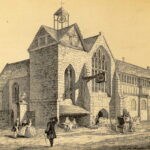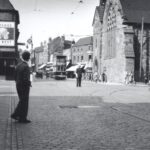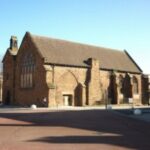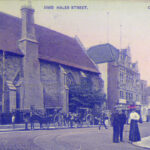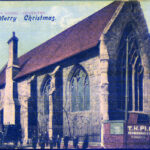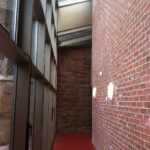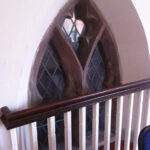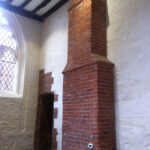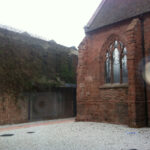Old Grammar School
Homepage » Old Grammar School
The Old Grammar School, Hales Street
The City Fathers wanted to pull it down; an American entrepreneur offered a four figure sum to take it apart block by block and transport it across the Atlantic; but a successful public appeal saved the building and it came to
be vested in the ownership of Trustees at Coventry’s Parish Church of Holy Trinity.
The man behind the move was Canon Beaumont . He said at the time: “If it is worth that to the Americans it is worth more to the people of Coventry.”
This chapter in the long history of the Grade I listed building came about in 1885 when pupils of King Henry VIII Grammar School moved to a new 13-acre site on Warwick Road. Afterwards it was put to good use by the Parochial
Church Council who also used the chancel as a Sunday School. But as church use diminished other organisations used the building – Trinity Guild Football Club, the Church Lad’s Brigade and the Welsh Presb yterian Church when they
had to leave Ford Street as its building was demolished for the construction of the Ring Road. In recent times, finding a new use for the building has proved difficult and it still awaits a new lease of life.
Turning to the Old Grammar School’s early history. A sanctuary was founded on the site around 1155 by Laurence, Prior of Coventry. It was known as the Hospital of St John and provided help and shelter to the poor and sick.
The old sandstone building we know today was built in the 1340’s. It had its own chapel and was maintained by gifts and endowments from local benefactors. The hospital had some 24 to 30 beds. There was a priest or master, three
under priests and five women in charge of provision for the poor and travellers who found lodgings there. The hospital continued as an ecclesiastical site until the reign of King Henry VIII when John Hales an Oxford learned
scholar, was sent to close it down. Hales was a clerk in the Court of the Chancery and one of the King’s Commissioners appointed to dissolve the Coventry monasteries.
In 1545 Hales acquired the old hospital from the Crown for the sum of £400 on condition he would found a free school there bearing the King’s name. Forty-nine 15th century oak choir stalls used as desks at Whitefriars where he
had previously founded a school were transferred to St John’s Hospital and are arranged around three sides of the old chancel. They remain there to this day, carrying the names of many generations of schoolboys and grooves and
troughs in the desktops for an early form of pinball.
Sadly the building lost its half-timbered library wing when the Burges was widened in 1794. Also demolished that same year was part of the west end of the old church and its bell tower. A new west front was constructed with an
embattled gable flanked by turrets and pinnacles that met with much criticism. Then in 1848 all the garden land and usher’s house were lost for the construction of Hales Street. Four years later the west front was reconstructed
in its more orthodox Gothic form, much as we see it today.
April 1941 saw the building damaged in the air raids but proper repairs were delayed until the 1960s. Once again the building came under threat in 1952 when the Council wanted to widen Bishop Street. Fortunately the Ministry of
Works refused the request for demolition.
The building has now been fully restored as part of the Coventry Transport Museum complex.
Among the distinguished scholars was Thomas Sheepshank, who became a Bishop of Norwich. He had been a pupil at the school while his father was headmaster.
Other pupils at the Old Grammar School who gained fame: Richard Allestry who was Provost of Eton College for 15 years; Dean Ralph Bathurst, President of Trinity College, Vice-Chancellor of the University of Oxford and Chaplain
to the King and Dean of Wells; Samuel Clark who in 1661 was one of the Commissioners at the Savoy Conference appointed to revise the Book of Common Prayer; Sir William Dugdale the historian; Thomas Holyoake, author of a Latin
and English Dictionary in 1677; The Rev Charles Evans, MA, who became headmaster of King Edward School, Birmingham; Thomas Sharp, the author of The Antiquities of Coventry; Dr A.S.Peake, author of Peake’s Concordance; Richard
Bailey who achieved fame as President of St John’s College, Oxford during the Civil War; John Fisher who became Admiral of the Fleet.
Update: Work is now complete on the renovation of the Old Grammar School by Coventry Transport Museum.
Read more on our news pages.
See a video of
the work in progress.
